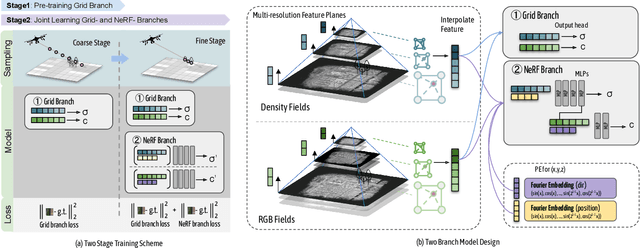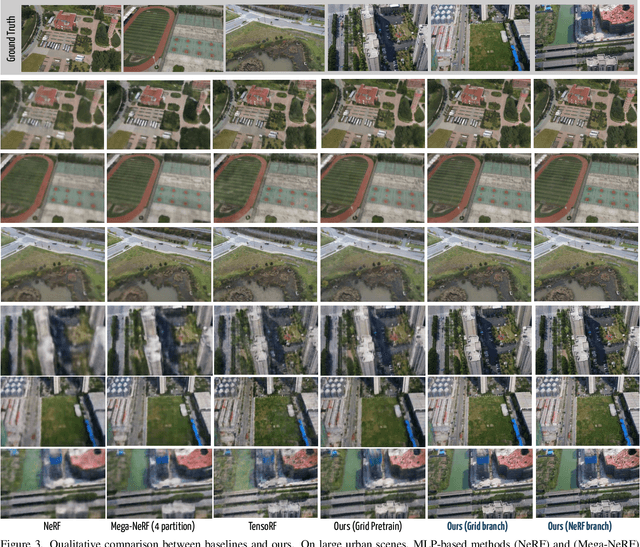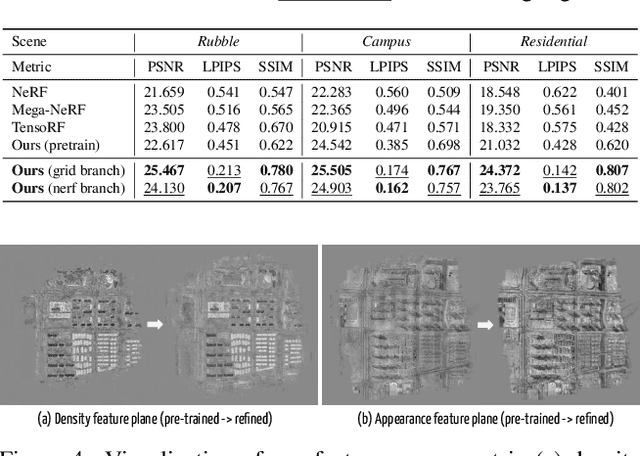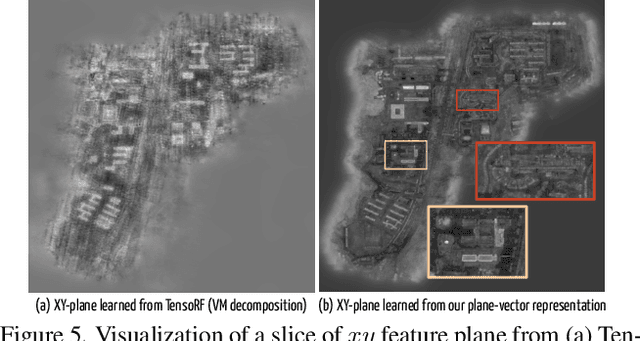Grid-guided Neural Radiance Fields for Large Urban Scenes
Paper and Code
Mar 24, 2023



Purely MLP-based neural radiance fields (NeRF-based methods) often suffer from underfitting with blurred renderings on large-scale scenes due to limited model capacity. Recent approaches propose to geographically divide the scene and adopt multiple sub-NeRFs to model each region individually, leading to linear scale-up in training costs and the number of sub-NeRFs as the scene expands. An alternative solution is to use a feature grid representation, which is computationally efficient and can naturally scale to a large scene with increased grid resolutions. However, the feature grid tends to be less constrained and often reaches suboptimal solutions, producing noisy artifacts in renderings, especially in regions with complex geometry and texture. In this work, we present a new framework that realizes high-fidelity rendering on large urban scenes while being computationally efficient. We propose to use a compact multiresolution ground feature plane representation to coarsely capture the scene, and complement it with positional encoding inputs through another NeRF branch for rendering in a joint learning fashion. We show that such an integration can utilize the advantages of two alternative solutions: a light-weighted NeRF is sufficient, under the guidance of the feature grid representation, to render photorealistic novel views with fine details; and the jointly optimized ground feature planes, can meanwhile gain further refinements, forming a more accurate and compact feature space and output much more natural rendering results.
 Add to Chrome
Add to Chrome Add to Firefox
Add to Firefox Add to Edge
Add to Edge